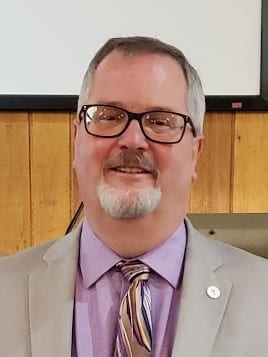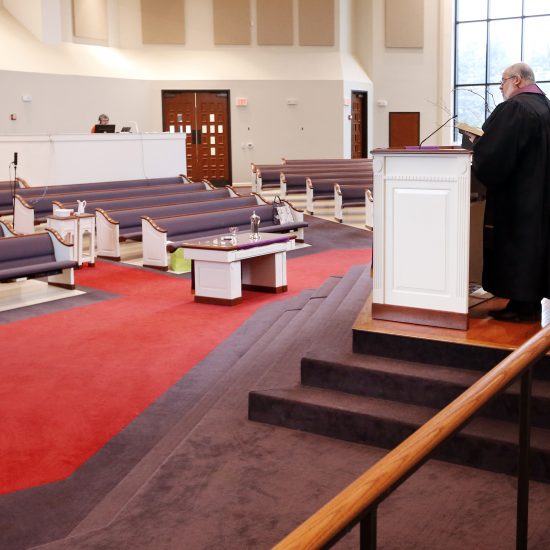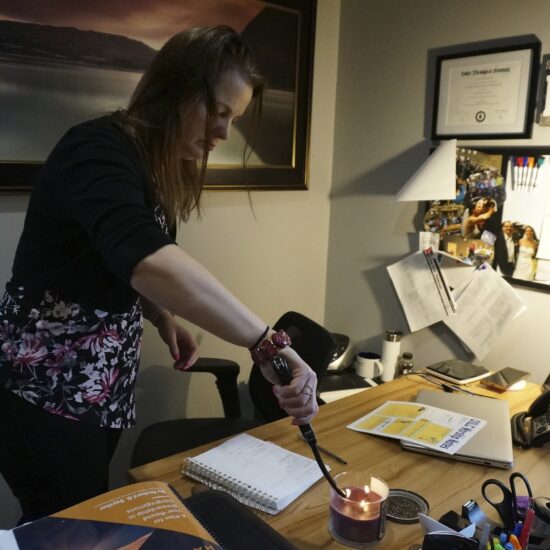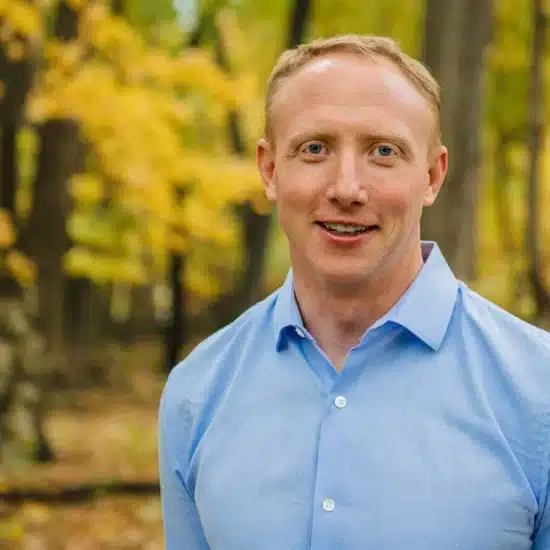

WOUNDED PASTORS: Navigating Burnout, Finding Healing, and Discerning the Future of Your Ministry. By Carol Howard and James Fenimore. Louisville, KY: Westminster John Knox Press, 2024.x + 174 pages.
I’m a survivor. That is, I stayed in pastoral ministry until I retired from full-time ministry at age 63. Actually, there were several such moments when I wondered whether I was cut out for pastoral ministry, but the most compelling moment of wonderment came at the end of my first full-time pastoral role. First one of the leaders in the church suggested I get vocational counseling since she felt I was not equipped for ministry. Shortly thereafter, I was asked to resign (a movement led by the same leader). Several reasons were given such as my failure to grow the church as well as my failure to be sufficiently patriotic after 9-11. Instead of choosing the “Star Spangled Banner” or maybe the “Battle Hymn of the Republic,” I chose hymns of healing and grace. After that moment I truly did wonder if I should continue to pursue pastoral ministry. After all, I had hoped to spend my career in academia. I also wondered whether interfaith community organizing might be in my future. Ultimately, I experienced healing and continued in pastoral ministry until my retirement. Now, I did retire during COVID-19, though I had already announced my impending retirement shortly before COVID-19 hit with a vengeance (a matter of weeks). While I didn’t retire because of COVID-19, I know that many pastors did walk away, having been deeply wounded by congregations that failed to understand the challenges of the moment. Years ago, Henri Nouwen published a book that many of us in ministry read (at least clergy of my generation). That book was titled The Wounded Healer: Ministry in Contemporary Society. The gist of the book suggested that our wounds provide a foundation for ministry. While that may be true, not all wounds are the same.

Robert D. Cornwall
I offer this personal account as a preface to my review of Wounded Pastors: Navigating Burnout, Finding Healing, and Discerning the Future of Your Ministry, authored by Carol Howard and James Fenimore. Howard is well known to many for her books and speaking events, and for good reason. She is a thoughtful writer and speaker as well as a dedicated Presbyterian pastor. She brings to this book her own experiences of woundedness in ministry. For this book, she is joined by James Fenimore, a United Methodist minister and therapist. He too has experienced woundedness in ministry. While they have experienced moments of woundedness, this book isn’t just about them. As they explore the realities of woundedness among clergy they draw upon numerous stories from other pastors who have experienced forms of woundedness that illustrate what woundedness looks like, while offering words of hope that clergy might experience healing to thrive in ministry. By bringing these stories into the conversation we may find situations that are like our own. The variety of stories is important. Having experienced healing myself in the pastorate that followed the one from which I resigned, I know that there is hope for healing. Knowing this to be true, I’m grateful to Carol Howard and James Fenimore for providing a path toward healing and a continuing future in ministry.
Carol Howard reveals in the Introduction that after she wrote Healing Spiritual Wounds: Reconnecting with a Loving God After Experiencing a Hurtful Church in response to the woundedness experienced by church members, she heard from frustrated clergy who were concerned that she didn’t deal with the wounds experienced by clergy at the hands of the churches they had served. While the former book was geared toward laypeople who had been wounded by their churches, this book is directed at clergy who have been wounded by the churches they served. She is joined in this effort by James Fenimore who brings not only his wisdom as one who has been wounded but his experience and expertise as a psychotherapist who has counseled wounded clergy. Now, they make it clear that they have geared this book to healthy pastors. That is, they are not writing to help narcissistic and sociopathic clergy, that is, the ones who wound congregations, feel better about themselves.
The authors divide the ten chapters of Wounded Pastors into three parts. Part One is titled “Identifying Our Pain.” Part Two is titled “Healing Our Lives.” Finally, Part Three is titled “Nurturing Our Growth.” At the end of each chapter, the authors provide a series of “Reflection Prompts” that invite the reader to look inward and take stock of our own situations in ministry.
In Part One, “Identifying Our Pain,” Howard and Fenimore start in Chapter 1 by laying the foundations for the discussion that follows. They take note of the impact of COVID-19 on clergy, as well as revealing their own experiences of woundedness. In essence, they let the reader know that they come at this question of woundedness from the perspective of being wounded themselves. That is, they are themselves wounded healers. They acknowledge both the challenges posed by COVID-19, but also the challenges of ministry in general. Thus, out of their own experiences and those of others, they offer a balm of healing to “pastors who feel burned-out and wounded, even as we know that we often have the best job in the world” (p. 13). Having laid out the challenges of ministry, in Chapter 2 they explore the need for “Finding Our People.” By “our people” they mean finding and developing healthy relationships beyond the congregations clergy serve. They note that it is generally not healthy for clergy to look to their congregations as their primary friendship circle. There are numerous reasons for this, including the need to have friendships that are mutual and can continue beyond one’s call. With this need for developing healthy relationships, they explore different types of friendships and forms of connection using the principles of Bowen Family Systems Theory.
We who are clergy know that loneliness can set in, especially in rural areas, where it can be difficult to develop friendships outside the congregation. It can even be difficult for clergy to develop friendships with other clergy. But they offer some suggestions as to how clergy go about doing this. One of the reasons we need to do this is when congregations wound us, we need support groups. Obviously, a wounding congregation can’t provide that support. In Chapter 3 Howard and Fenimore show us how telling our own stories can help us navigate experiences of woundedness, for in telling our stories we can define ourselves as individuals while making sense of trauma triggers. To do this we’ll need to dedicate time to the process of laying out stories and then find story holders. That is, people who will listen to our stories and hold them close. Together with telling our stories, they invite us to identify our context. In other words, they speak of identifying the systems we inhabit, including our families, our churches, and other groups we are part of. Again, this is addressed using systems theory. As we do this, we can better understand our experiences of anxiety, as well as develop different forms of leadership for ministry, including technical and adaptive forms of leadership.
Howard and Fenimore title Part Two “Healing Our Lives.” This section includes three chapters, beginning with “Recognizing Our Reactions” (Chapter 5). In this chapter, the authors ask us to consider whether we over function, trying to do everything to please the powers or do we get so bogged down that we give up and under function. Or perhaps we find ourselves experiencing triangulation. As we identify the way we react to woundedness, they share how clergy can become a “less anxious presence.” They note that they have learned that “reducing anxiety comes from deflecting blame, attending to our workload, flattening triangles through more one-on-one communication, and building support” (p. 80). Another step in healing our lives involves setting boundaries (Chapter 6). Boundaries come in a variety of forms, and not just sexual ones. The key is self-differentiation and understanding the need for boundaries without setting rigid ones. Finally, in Chapter 7 they speak of forgiving one’s antagonist. That’s not easy, as I’ve discovered from experience. But forgiveness comes in different forms and cannot undermine accountability. The process of forgiveness involves giving oneself gifts, including giving oneself time, permission to feel, justice, and forgiveness to oneself. Remember forgiving doesn’t include forgetting, at least not usually. Thus, they recommend gathering the support network and telling one’s story as the beginning of the process.
In Part Three Howard and Fenimore invite us to move from healing wounds to “Nurturing Our Growth.” This section includes three chapters that begin in Chapter 8 with “Reclaiming Our Meaning.” Here they draw on Victor Frankl, whose experiences in the Nazi camps influenced his view of reality. The goal here is to reframe and refocus our perspectives regarding ourselves and the churches we serve. Thus, we can move from victim to survivor. Chapter 9 invites us to consider whether to renew or release our call. Do we stay or do we leave? There is no right answer here. Some stay and others leave. That’s okay. Finally, in Chapter 10 they note that even wounds that heal still leave a trace. Thus, we who are wounded remain “Walking Wounded.” In the course of this discussion, Howard and Fenimore point out that in the resurrection stories, Jesus retains his wounds. They are part of his identity but do not define him. With this in mind, the authors write that “Identifying, healing, and growing from traumatic experiences is a long and painful process. The messy wounds will forever mark us, but they do not ultimately define us. Yet—this is very important—the benefits of growth are vital and life-giving” (p. 165).
Carol Howard and James Fenimore speak to clergy, people like me, who have been wounded, offering us grace and compassion, and a path toward healing. Along the way, we may choose to leave or to stay. Each of us is different. If I hadn’t had that second pastorate, where both the congregation and I healed from previous wounds, I probably would have left. Whatever our situation, Wounded Pastors speaks to our realities. The first-level readers of Wounded Pastors are pastors who have been wounded, helping them recognize the form of woundedness and finding a path to healing. But even if you have not experienced being wounded in ministry, this is an important book that every pastor or minister will find helpful. You may find resources here that will limit your exposure to woundedness, and if at some point you are wounded, you will have close at hand a resource that will help you navigate your situation in ministry, helping you discern a way forward toward healing. If nothing else, Carol Howard and James Fenimore help us understand our ministry contexts and guide us toward creating the kinds of support networks we need if we’re going to not only survive ministry but thrive. Take it from this now-retired ministry survivor, Wounded Pastors is a must-read for all clergy, wounded or not.
This review originally appeared on BobCornwall.com.
Robert D. Cornwall is an ordained minister in the Christian Church (Disciples of Christ). Now retired from his ministry at Central Woodward Christian Church (Disciples of Christ) of Troy, Michigan, he serves as Minister-at-Large in Troy. He holds a Ph.D. in Historical Theology from Fuller Theological Seminary and is the author of numerous books including his latest “Second Thoughts about the Second Coming: Understanding the End Times, Our Future, and Christian Hope” coauthored with Ronald J. Allen. His blog Ponderings on a Faith Journey can be found at www.bobcornwall.com.






